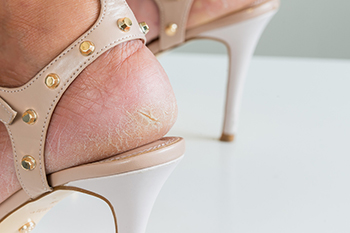Calcium deposits that form on your heel are known as heel spurs. These deposits typically develop in response to different kinds of trauma to the heel. Some examples include inflammation of the band of tissue on the sole of the foot (plantar fasciitis), chronic stress on ligaments and muscles surrounding the heel, or repeated tears of the heel bone membrane. Arthritis, high arches, obesity, acute heel injuries, improper footwear, flat feet, and gait disorders may also contribute to heel spurs arising. Symptoms may include heel pain, inflammation, and swelling, however, they are not always symptomatic or visible. Since heel spurs are often present and share symptoms with plantar fasciitis, they may go undetected until an imaging test is performed. Conservative treatments may include physical therapy, rest, and anti-inflammatory medicine. If these methods do not provide relief a surgical option may be appropriate. You can discuss your treatment options with a podiatrist after they have performed an examination and conducted tests to make an accurate diagnosis.
Heel spurs can be incredibly painful and sometimes may make you unable to participate in physical activities. To get medical care for your heel spurs, contact Frank Henry, DPM from Marble Falls, TX. Our doctor will do everything possible to treat your condition.
Heels Spurs
Heel spurs are formed by calcium deposits on the back of the foot where the heel is. This can also be caused by small fragments of bone breaking off one section of the foot, attaching onto the back of the foot. Heel spurs can also be bone growth on the back of the foot and may grow in the direction of the arch of the foot.
Older individuals usually suffer from heel spurs and pain sometimes intensifies with age. One of the main condition's spurs are related to is plantar fasciitis.
Pain
The pain associated with spurs is often because of weight placed on the feet. When someone is walking, their entire weight is concentrated on the feet. Bone spurs then have the tendency to affect other bones and tissues around the foot. As the pain continues, the feet will become tender and sensitive over time.
Treatments
There are many ways to treat heel spurs. If one is suffering from heel spurs in conjunction with pain, there are several methods for healing. Medication, surgery, and herbal care are some options.
If you have any questions feel free to contact our office located in Marble Falls, TX . We offer the latest in diagnostic and treatment technology to meet your needs.

 Tarsal tunnel syndrome
Tarsal tunnel syndrome




